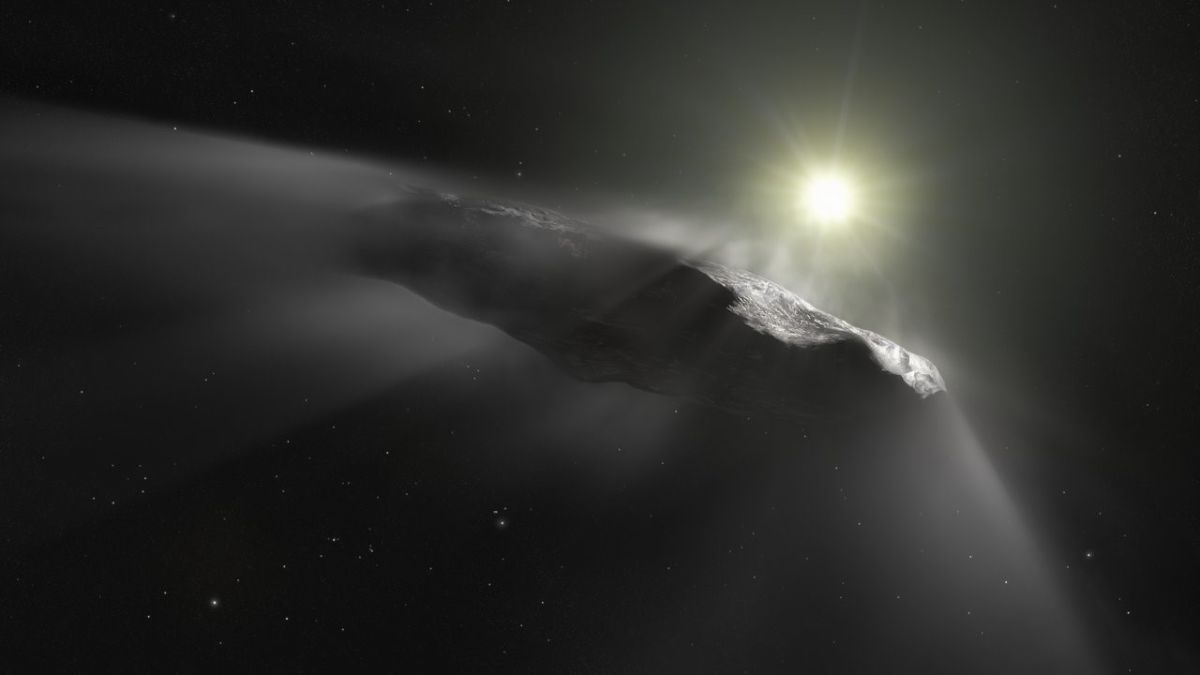
www.space.com
Where did the interstellar object 'Oumuamua come from? Its speed could tell us
The velocity of interstellar objects passing through our solar system, like 'Oumuamua, can be correlated to their chemistry and the type of star they came from.
Science & Tech
Astronomers will be able to figure out what kind of stars interstellar objects such as 'Oumuamua come from, and therefore something about their compositions, based on their velocity as they enter our solar system, new research suggests.
So far, astronomers have discovered only two confirmed interstellar objects (ISOs) in our solar system, 'Oumuamua and 2I/Borisov. They couldn't have been more different from one another: 'Oumuamua lacked any kind of cometary tail, whereas Borisov looked like a typical comet.
However, the properties of their home planetary systems are imprinted on both of them, said grad student Matthew Hopkins of the University of Oxford in England, who conducted the new research and presented it at the U.K.'s National Astronomy Meeting in early July.
"Because they come from other stars, their properties are going to correlate with those stars," Hopkins told Space.com.
Though we've only spotted two ISOs to date, it's expected that thousands of them are passing through our solar system at any given time, most too far away from us to be detected. However, most or all of those ISOs likely began life as comets around other stars, before an encounter with a Jupiter-sized planet, or perhaps a fly-by star, ejected them into interstellar space.
In our solar system, "for every one comet that Jupiter [and Neptune] pushed into the Oort Cloud, it completely ejected 10, and there are a trillion objects in the Oort Cloud," said Hopkins. Doing the math, it is easy to come to the conclusion that ISOs "are the most numerous objects in the Milky Way galaxy."
Moving groups of interstellar objects
Each star is moving around the galaxy at its own pace, and together they form moving groups that are related to their point of origin, which, in turn, corresponds with their intrinsic chemistry.
The stars with the most heavy elements, such as our sun, live in the "thin disk" of the galaxy, a plane in the spiral arms about 400 light-years thick. Surrounding it is the "thick disk," which can stretch as high as 1,000 light-years above the plane of the galaxy and contains mostly older stars with fewer heavy elements.
The populations of stars belonging to each disk have different velocity distributions. Because the ISOs that they eject share a similar velocity as their parent star relative to the sun, they tend to stick to the same moving groups, but these moving groups criss-cross the sun's path all the time.
"The sun is essentially running into them," said Hopkins. This means that we should preferentially expect to see ISOs coming from the "solar apex," which is the direction of the sun's motion relative to other nearby stars.
"'Oumuamua was very close to the solar apex," Hopkins said. "Borisov was slightly farther away but still quite near [to the solar apex], and that's where we expect most of them to come from."
Coming from this direction means that they'll make their closest approach to the sun, where they are easiest to detect, while they are in the Southern Hemisphere sky — the same sky that the new Vera Rubin Observatory will be surveying. It is expected that Vera Rubin will discover hundreds of new ISOs.
























































